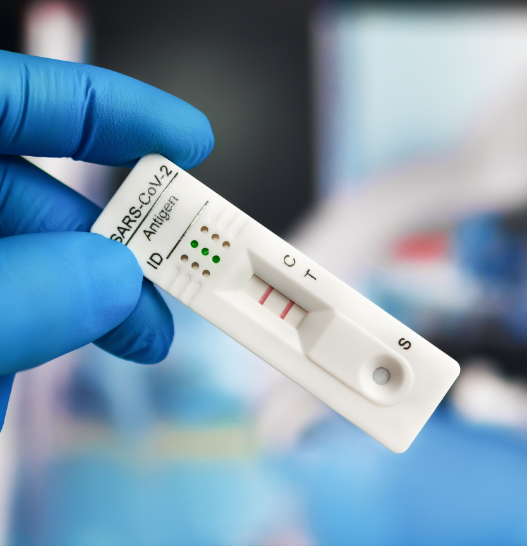This article aims to provide a basic understanding and answers the following questions:
- What exactly is usability engineering and what is usability engineering for medical devices?
- Why is usability engineering for medical devices so important?
- Are you obliged to do usability engineering?
- How does usability engineering for medical devices work?
In addition, you will always find links to more in-depth articles at the appropriate places, which illuminate the individual sub-aspects in more detail.
What is Usability Engineering?
Usability engineering is a process used to improve the usability of products. It is an aspect of the overall product development process and focuses on making the final product easy to use and understand.
Usability engineering typically includes the following steps:
- User Research: The collection of data about user needs, preferences, and capabilities. This can be done through interviews, surveys, observations, and other methods.
- Prototyping: Based on the user research, a simple design of the product is created. This design is then tested for usability and iteratively refined further through feedback from user testing (see the next two points).
- User testing: These tests are designed to measure the performance and satisfaction of real users. They can be conducted either in a controlled environment (e.g., a usability lab) or in the actual environment in which the product is used.
- Iterative improvement: Based on the results of user testing, improvements are made to the product or prototype. This cycle of testing and improvement is repeated as often as necessary to make the product safe.
What is usability engineering for medical devices according to IEC 62366-1?
How does IEC 62366-1 define “usability engineering”? Usability Engineering is the ”application of knowledge about human behaviour, abilities, limitations, and other characteristics to the design of medical devices (including software), systems and TASKS to achieve adequate usability.” (source: IEC 62366-1:2021-08)
Further, the note adds, “Achieving adequate usability can result in acceptable RISK related to use”.
Usability engineering for medical devices thus pursues the goal of eliminating unacceptable risks for patients, users, and third parties through user-centered usability design.
Why is usability engineering so important for medical devices?
For the approval of your medical device in Europe, the prerequisite is that you meet all the requirements of the MDR. Part of these are the essential performance and safety requirements (Annex I). Usability Engineering according to IEC 62366-1 helps you to comply with them.
The background: The strong normative regulation of product development is particularly important because, in the case of medical devices, incorrect operation can lead to death in the worst case. The wrong interpretation of data, an incorrect or too late treatment due to operating errors – all this should be controlled!
Usability engineering therefore plays an important role in the risk control of the medical device. All operating risks should be named in the usability engineering process and controlled as far as possible. This is an important part of risk management for the safety of the complete product.
Is there an obligation for usability engineering?
Even though the European Medical Device Regulation (MDR) rarely mentions the word usability, it is an essential part of your approval to demonstrate that risks from using your medical device have been reduced to an acceptable residual risk. This is about the essential performance and safety requirements from Annex 1 of the MDR mentioned in the previous chapter.
You must meet these requirements, but you are not necessarily bound by the usability engineering process. They can also fulfill the individual parts without the process. However, usability engineering proves to be a very pragmatic way in practice.
Learn more in our article “Is there a “usability obligation” for medical devices?“.
How does usability engineering work?
In summary, you will go through the following steps:
- The creation of a use specification. This contains all relevant information about the mode of action of the product, the users, the use environment and the intended medical indication.
- Identifying all the characteristics of your user interface that involve potential hazards.
- Identification and description of all hazards and hazardous situations
- Creating a list of all hazards or hazardous situations to be tested in the summative evaluation
- Creation of a User Interface Specification and a User Interface Evaluation Plan
- Designing the user interface, if necessary with the help of iterative formative evaluations during development
- Carrying out a final summative evaluation of the usability of the user interface.
Would you like to delve deeper into the topic? In our article „Usability engineering for medical devices according to IEC 62366-1” we explained the process step by step in detail.
Usability Engineering for the FDA:
The U.S. Food and Drug Administration (FDA) is even more direct than the European MDR: It clearly requires the usability engineering process (or human factors engineering process) and even provides a comprehensive guidance document for this.
However, the FDA also has its own requirements and guidance documents that must be followed when designing medical devices. Some of these requirements may be more specific or stringent than those specified in IEC 62366-1.
Thus, it is not guaranteed that a product that meets the requirements of IEC 62366-1 will automatically meet all FDA requirements. It is important to review the specific FDA requirements and guidelines and ensure that the product meets them.
Conclusion
Usability engineering is an essential part of product development, especially for medical devices. It aims to design products that are not only effective and safe, but also user-friendly.
For which medical device do you need to apply usability engineering? Get in touch with us via our contact form.
You are welcome to discuss your specific case with us in a free introductory meeting. We look forward to hearing from you!



